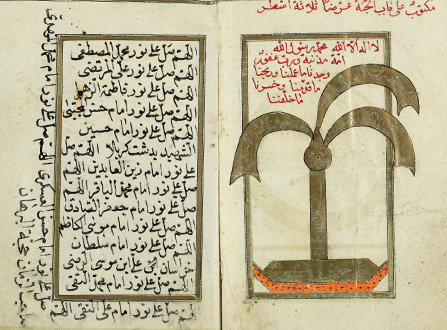Children's literature and the avant-garde
لتكبير النص لتصغير النص- كتاب
This chapter addresses what an avant-garde for children might look like, and what it might do. It is called "Surrealism for Children: Paradoxes and Possibilities" because the very notion of an avant-garde for children strikes the author as both paradoxical and not, and as both possible and impossible. In making this claim, the author argues with - and revises - his own analysis in The Avant-Garde and American Postmodernity: Small Incisive Shocks (2002), which took for granted that an avant-garde for children was both possible and critically viable. What he once accepted as a certainty, he now
| العنوان |
Children's literature and the avant-garde / edited by Elina Druker, Bettina Kümmerling-Meibauer. |
|---|---|
| الطبعة |
1st ed. |
| الناشر |
Amsterdam, Netherlands Philadelphia, Pennsylvania : John Benjamins Publishing Company |
| تاريخ الإصدار |
2015 |
| ملاحظات |
Description based upon print version of record. Includes bibliographical references at the end of each chapters and indexes. English |
| رقم الرف |
Children's Literature and the Avant-Garde Editorial page Title page LCC data Table of contents Table of figures Introduction What is Avant-garde? Avant-garde and children's books Aims of this volume Selected bibliography John Ruskin and the mutual influences of children's literature and the avant-garde The condition of childhood Influence of improved printing for children Children's literature and culture as Purveyors of the Grotesque Political caricaturists as children's book illustrators Roots of the picturebook in total design References Primary sources Secondary sources Einar Nerman - From the picturebook page to the avant-garde stageCaricature artist, painter and performer Crow's Dream - An animal revolution Darkness and light From stage designs to picturebooks Mass culture, children's literature and the avant-garde Sándor Bortnyik and an inter-war Hungarian children's book Publication variations The book Sándor Bortnyik: Biography and activity Bortnyik in Germany Return to Hungary Hungarian modernism and its origins Modernism and its relationship to graphic design Potty és Pötty: Illustrations and textBortnyik and children's books Conclusion Acknowledgments The forgotten history of avant-garde publishing for children in early twentieth-century Britain Recovering Britain's lost avant-garde legacy Surrealism and British children's fiction: Jean de Bosschère The City Curious (1920) Childhood recaptured: Child art and children's literature in Britain The Émigré effect: Adapting European techniques to British tastes Avant-garde echoes Experimental landscapes: Avant-garde arts meet the English landscapeAcknowledgement The square as regal infant Kazimir Malevich and the avant-garde infantile Shape, Geometry, and the Infantile El Lissitzky and the avant-garde infantile Vladimir Lebedev and the avant-garde infantile The 1929 Amsterdam exhibition of early Soviet children's picturebooks Historical background Publishing children's books in the early Soviet Union Early Soviet children's books Illustrators of Soviet children's booksEarly exhibitions of Soviet children's books The organization of the 1929 Amsterdam exhibition The reconstruction of the exhibition Representativeness The reception Conclusions Appendix Rupture. ideological, aesthetic, and educational transformations in Danish picturebooks around 1933 A new society, a new child, a new picturebook The new world presented in Jørgens Hjul The education of the socialist citizen Aesthetic appeal in text and image Toward a pedagogic poetics. Progressive educational ideals in Denmark around 1933 |
| سلسلة |
Children's Literature, Culture, and Cognition, 2212-9006 Volume 5 |
| الشكل |
1 online resource (307 p.) |
| اللغة |
الانكليزية |
| تأريخ حقوق الملكية الفكرية |
©2015 |
| رقم النظام |
997010718394405171 |
MARC RECORDS
أتعرفون المزيد عن هذا العنصر؟ وجدتم خطأ ما؟

 سجل الدخول باستخدام غوغل
سجل الدخول باستخدام غوغل
 تسجيل الدخول باستخدام فاسيبوك
تسجيل الدخول باستخدام فاسيبوك



